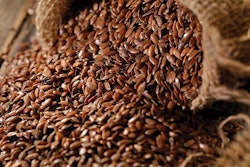
Following trends in human nutrition, omega-3 fatty acids increasingly find their way into discerning animal feeds.
There is a healthy increase in demand for omega-3 fatty acid-enriched nutrition products among the human food industries, as nutrition experts recommend a shift toward consuming more of these fatty acids for several reasons. Consequently, the animal feed industry is looking to omega-3 fatty acids as a way to produce enriched products for humans, such as eggs and possibly meat, or to use the properties of these fatty acids to enhance productivity, health and welfare in animals. There is, therefore, an increase in demand for feed ingredients rich in omega-3 fatty acids, but these are rather limited for the time being. Below are the major ingredients available to the feed industry.
Fish meal
Depending on fish species (the fattier the better), fish meal contains up to 10% fish oil, which is very rich in omega-3 fatty acids, especially DHA (docosahexaenoic acid) and EPA (eicosapentaenoic acid). Fish meal and oil are sought after from the aquafeed industry and, thus, marine products have become an expensive specialty for farm animal feeding. The focus, hence, has been placed on plant-sources.
Linseed oil
Linseed oil remains the major source of omega-3 fatty acids as it contains up to 50% ALA (alpha-linolenic acid). This fatty acid is the major omega-3 fatty acid found in plants and a precursor of DHA and EPA (long chain omega-3 fatty acids) in animals. However, the conversion of ALA to DHA and EPA occurs with relatively low efficiency in animals. Linseed oil is used to produce omega-3-enriched eggs, but it has its own limitations, as it can be a rather bitter substance and is prone to rapid oxidation. Whole linseeds (extruded) are an alternative to linseed oil for animal feeds.
Canola oil
Surprisingly, canola oil contains up to 10% ALA, which is not as impressive as linseed oil but, again, it is much better than the next contender. Canola oil can also be bitter if not treated so, in some cases, full-fat canola seeds (extruded) are preferred, especially if adding oil is not possible at the farm level.
Soybean oil
The next richest source in ALA is soybean oil with 7%. As we add usually no more than 6% oil in most feed formulas (for technical reasons), this implies the majority of farm animals receive no more than 0.42% ALA in their feeds. Whether this is enough remains a matter of speculation. In contrast, fish meal, when added at its maximum allowance (10%) provides up to 1% fish oil (as it contains up to 10% fish oil itself), a good portion of which is omega-3 fatty acids (as it also contains omega-6 fatty acids, with the final concentrations depending on species). Given a 20% maximum conversion from ALA to other omega-3 fatty acids, this means soybean oil is the last practical option.
Micro algae
Fish and other marine animals do not synthesize omega-3 fatty acids. Instead, they consume them by eating micro algae, which synthesize them, or other marine organisms that have previously consumed micro algae. There is a great effort to produce micro algae rich in DHA and EPA under commercial (laboratory-controlled) conditions. So far, these products are absorbed by the human supplements industries, but they may become economically viable for animal feeding soon.
Other minor sources
Other plant sources rich in omega-3 fatty acids (ALA) exist, but they are unavailable to the animal feed industry because they are consumed by humans (chia seeds, hemp seeds, walnuts, brussels sprouts, etc.) Grass is another source of ALA, and grass-fed animals contain higher levels of ALA, but rendering products from such animals are not easy to encounter in the feed industry.
For the moment, linseed oil remains the only truly rich source of omega-3 fatty acids whereas, in the immediate future, micro algae may become another source available for animal feeding.


















